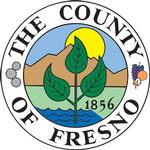
County Director
For Guest Services
Fresno, CA 93710
Fresno, CA 93710
4-H Questions
Tracy Newton:
(559) 241-7525
Stay Connected on Social Media:
Fire as a Tool
Fire is a natural part of the California landscape. However, fire suppression efforts that began nearly a century ago attempted to remove fire from the landscape. The legacies of this are ecosystems that have dramatically changed and are at higher risk of catastrophic fire. By returning fire to the landscape under the right set of conditions through low and moderate intensity burns, we can reduce fuel loads and lower the risk of high severity wildfire in treated areas.
This is often accomplished through beneficial fire including cultural burning, fire managed for resource benefit, and prescribed fires. The California Strategic Plan for Expanding the Use of Beneficial Fire sets ambitious targets for state and federal agencies, California Native American tribes, and nongovernmental partners to deploy beneficial fire on 400,000 acres annually by 2025.
Cultural burning is the intentional application of fire by Native American tribes, tribal organizations, or cultural fire practitioners to achieve cultural goals or objectives. Cultural burning can differ from prescribed fire in terms of size, seasonality, timing, preparation and planning, and post-fire treatment.
How the Indigenous practice of ‘good fire’ can help our forests thrive
Fire managed for resource benefit or ‘managed fire’ is when forest managers make the strategic choice to manage unplanned ignitions to achieve management objectives, such as ecosystem restoration or hazard reduction. Fire managed for resource benefit is typically deployed in wilderness areas, national parks, and other areas in public ownership under specific conditions or circumstances.
How Wildfire Restored a Yosemite Watershed
Prescribed burning is the intentional application of fire for wildland management goals, including the prevention of high intensity wildland fires, watershed management, range improvement, vegetation management, forest improvement, wildlife habitat improvement, restoring ecological integrity and resilience, community wildfire protection, carbon resilience, enhancement of culturally important resources, and maintenance of air quality. Prescribed fires are typically conducted in compliance with a written prescribed fire plan or ‘burn plan’ that outlines the conditions necessary for the burn to be “within prescription.”
Burn Permitting Guidelines

Prescribed Fire Claims Fund
In June, the State of California rolled out a first-of-its-kind approach to curbing the state’s catastrophic wildfire problem by providing new protections for prescribed fire and cultural burning practitioners. The $20 million allocated for the “Prescribed Fire Liability Claims Fund Pilot” will cover losses in the rare instance that a prescribed or cultural burn escapes control.
The fund will provide up to $2 million in coverage for prescribed fire projects led by a qualified burn boss or cultural practitioner. The fund is meant to demonstrate that prescribed fire, when carefully planned, resourced, and implemented, is a low-risk land management tool that mitigates the larger, more damaging risks of high-severity wildfires. The fund is the first of its kind nationally and is the result of several years of collaboration by a diversity of partners working with Senator Dodd’s Office, including The Nature Conservancy, CAL FIRE, the University of California Cooperative Extension, the California Department of Insurance, Tribal representatives, and many others.
Visit the fund's landing page here!
Watch the introductory webinar here!




